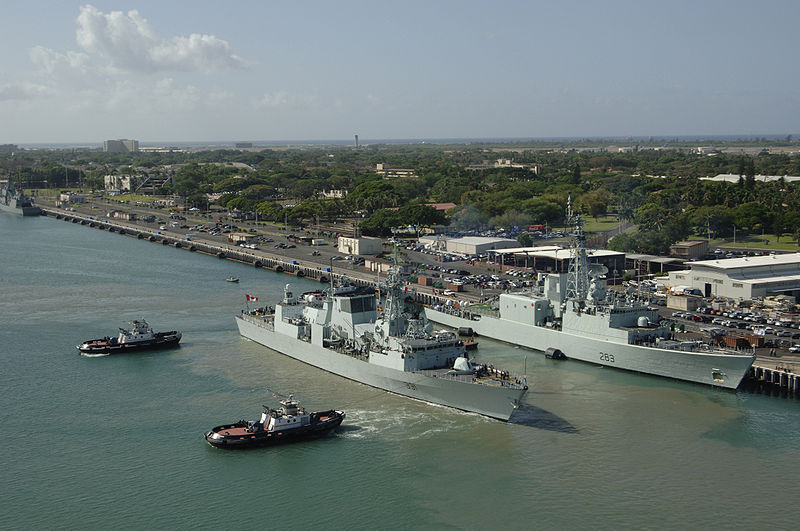As I’ve pointed out before, navies require more ships to do certain jobs because naval vessels require extensive service, repair, and upgrade work such that up to a third of a given ship’s working life will be spent in port and out of service. The Royal Canadian Navy is at a very low point in vessel availability right now:
Of a total of 33 main ships and submarines, 15 are being repaired or undergoing upgrades, while another four are at a lesser state of readiness as they conduct tests on recently installed and modernized systems.
“This is our most challenging year but we have a plan to make sure we have ships available all the time,” Commodore Brian Santarpia, director general, navy strategic readiness, said in an interview with the Citizen. “We’re still quite confident we can fill all the tasks given to us.”
The navy’s 12 frigates are being upgraded as part of the Halifax-class modernization program. Involving $5 billion worth of work, the project will see engineering, radar and weapon systems upgrades, as well as other improvements made to the vessels, Santarpia said.
As part of that process, five frigates are unavailable for operations because they are either in dry-dock or being prepared for the upgrade process.
The Halifax-class frigates are considered the backbone of the navy.
As vessels come out of the modernization process, they go through various stages of readiness as the new systems are being verified and tested and the crew conducts training. “They are available for operations, just not at the very highest levels,” Santarpia explained.
Defence analyst Martin Shadwick said the situation is a result of having a “compact” maritime force and a large number of aging vessels that had to be modernized.
“The navy has known this period was approaching but in the short term they don’t have much choice but to live with it,” said Shadwick, a strategic studies professor at York University in Toronto.
He said a further crunch time for the maritime force will come in the next four years. That is when three aging destroyers, which provide command and control as well as overall air defence for naval task groups, are removed from service.
At that point, the navy goes from the 15 frigates and destroyers, which are the mainstays of the service, down to 12 frigates. In addition, the navy will be without supply ships to provide fuel and provisions at sea. Those two aging ships are to be retired before 2019 and their replacements will not be ready in time.
Under normal circumstances, the RCN would have about 10 frigates and two destroyers available, with the other ships in varying stages of refit, maintenance, and repair. With the recent engine room fire on board HMCS Protecteur, the navy is far more restricted in the kinds of activities it can undertake (only one support ship, HMCS Preserver is available). And let’s just not talk about the state of the RCN’s submarines.




